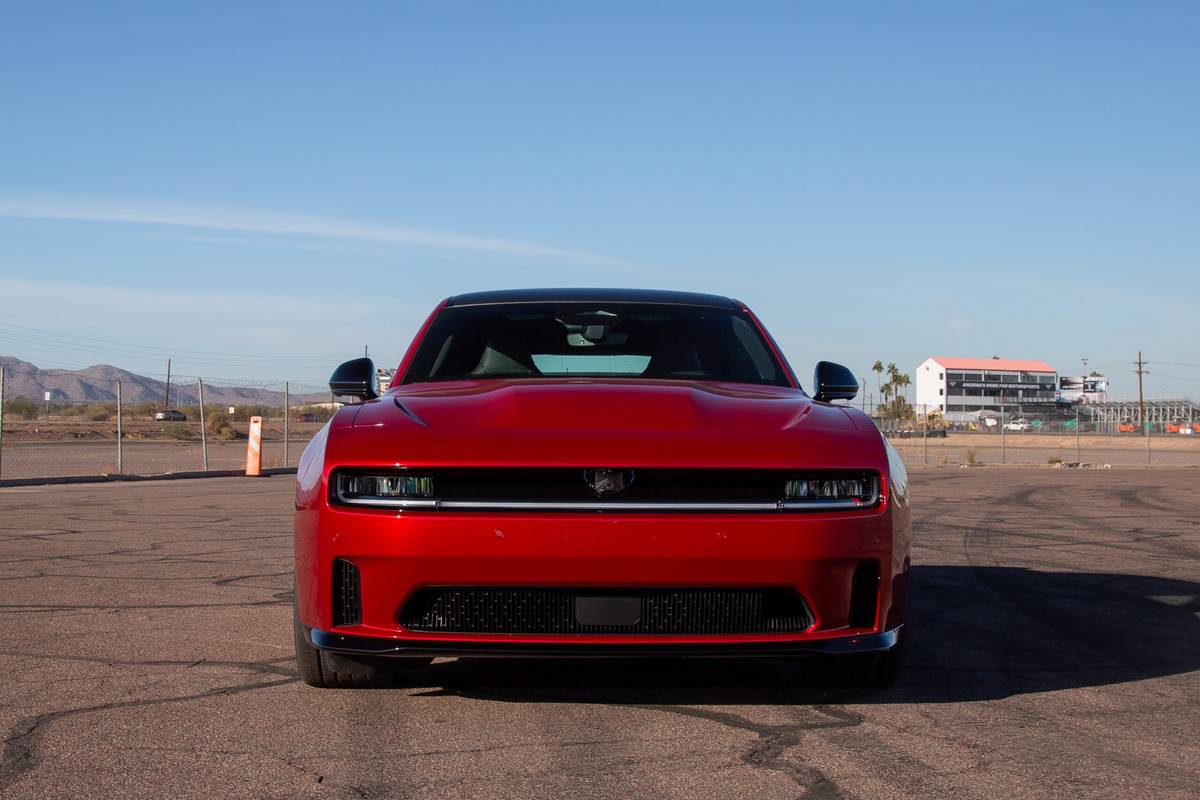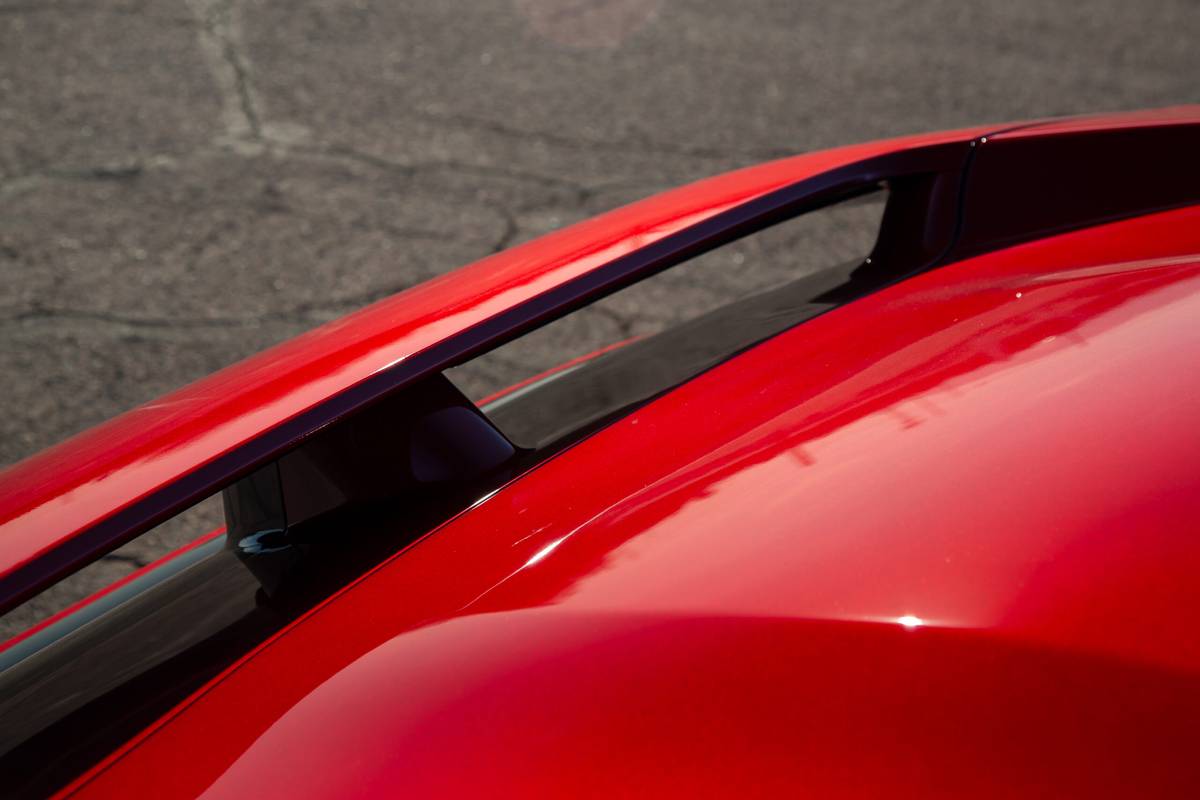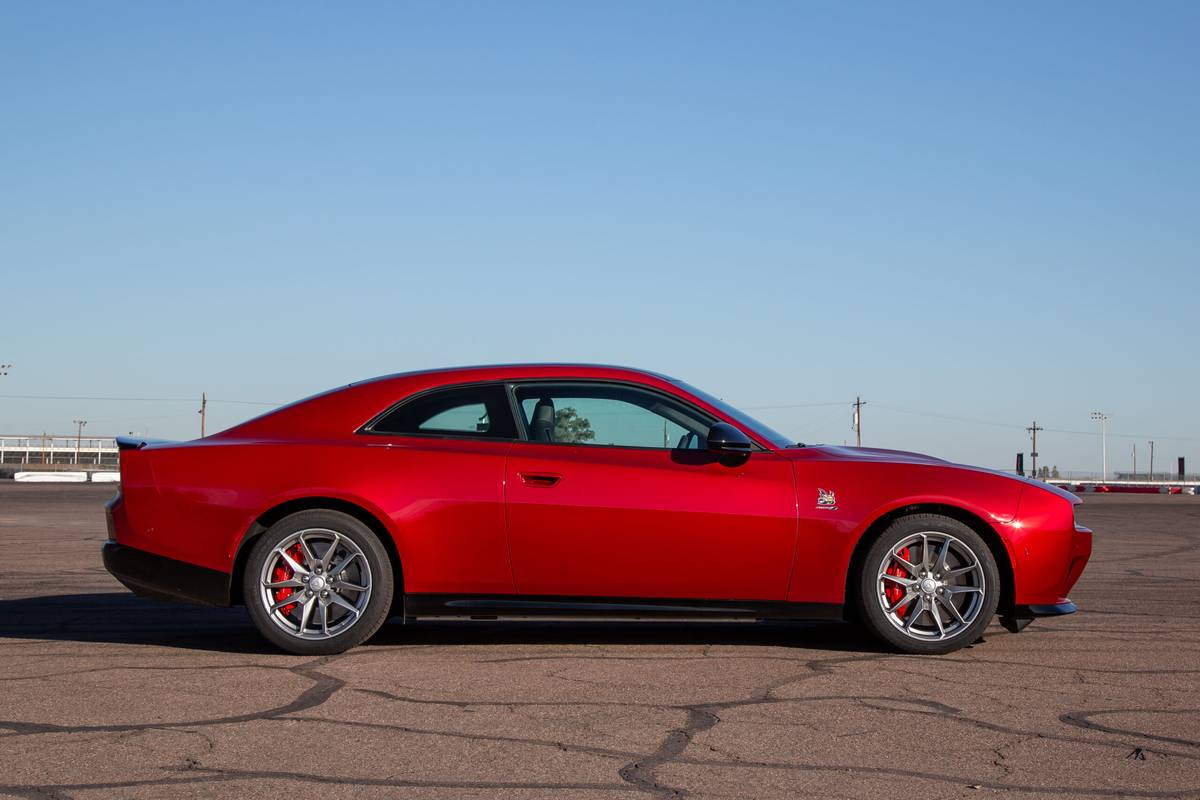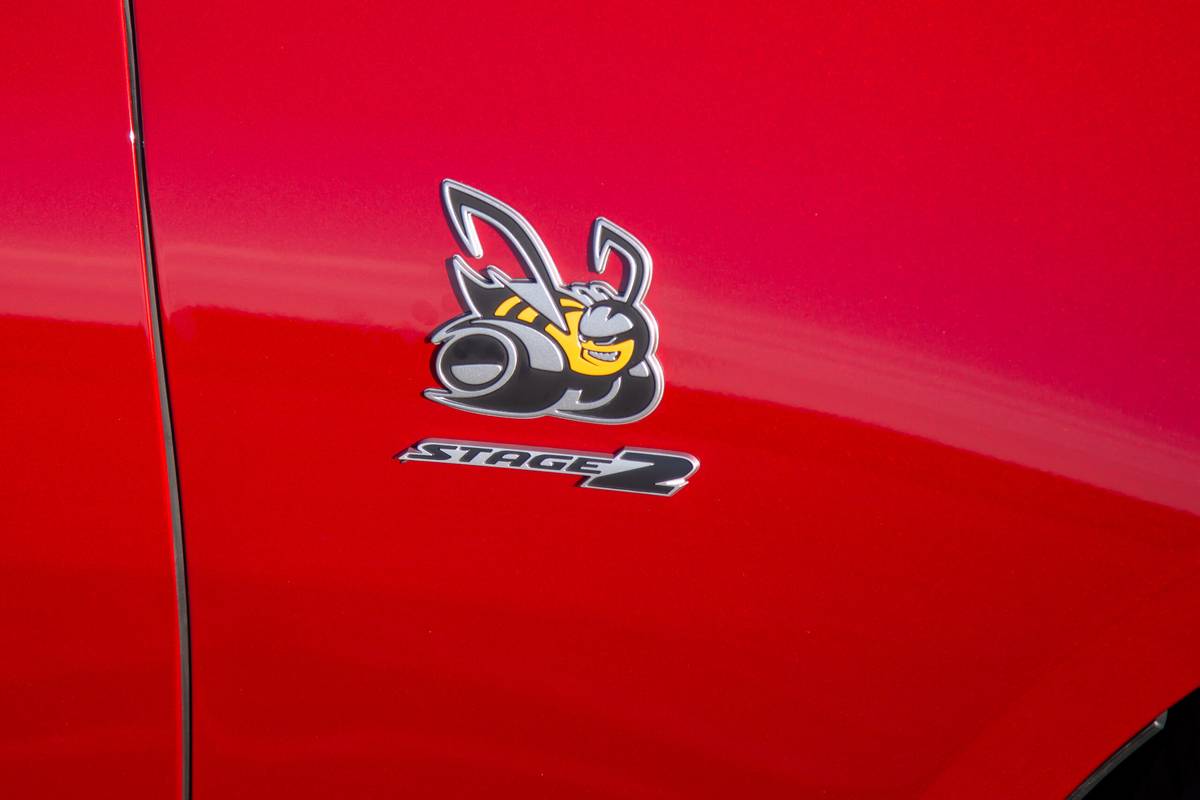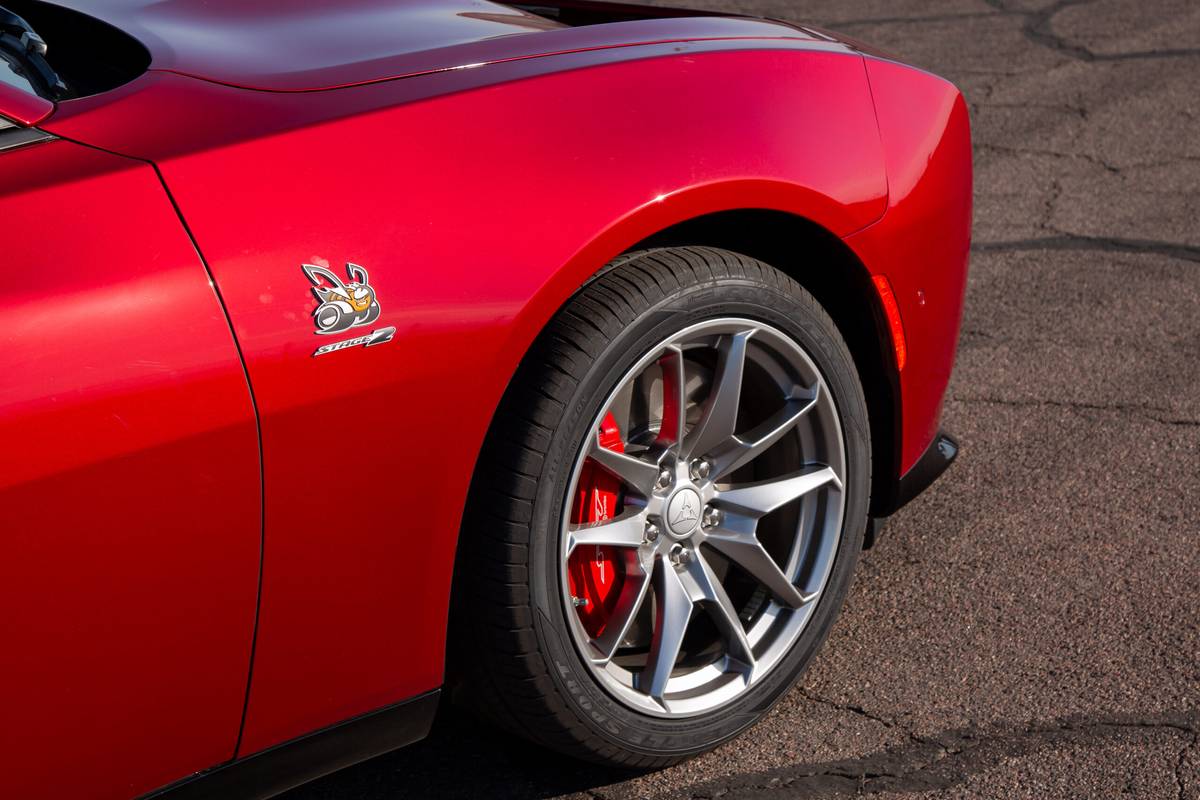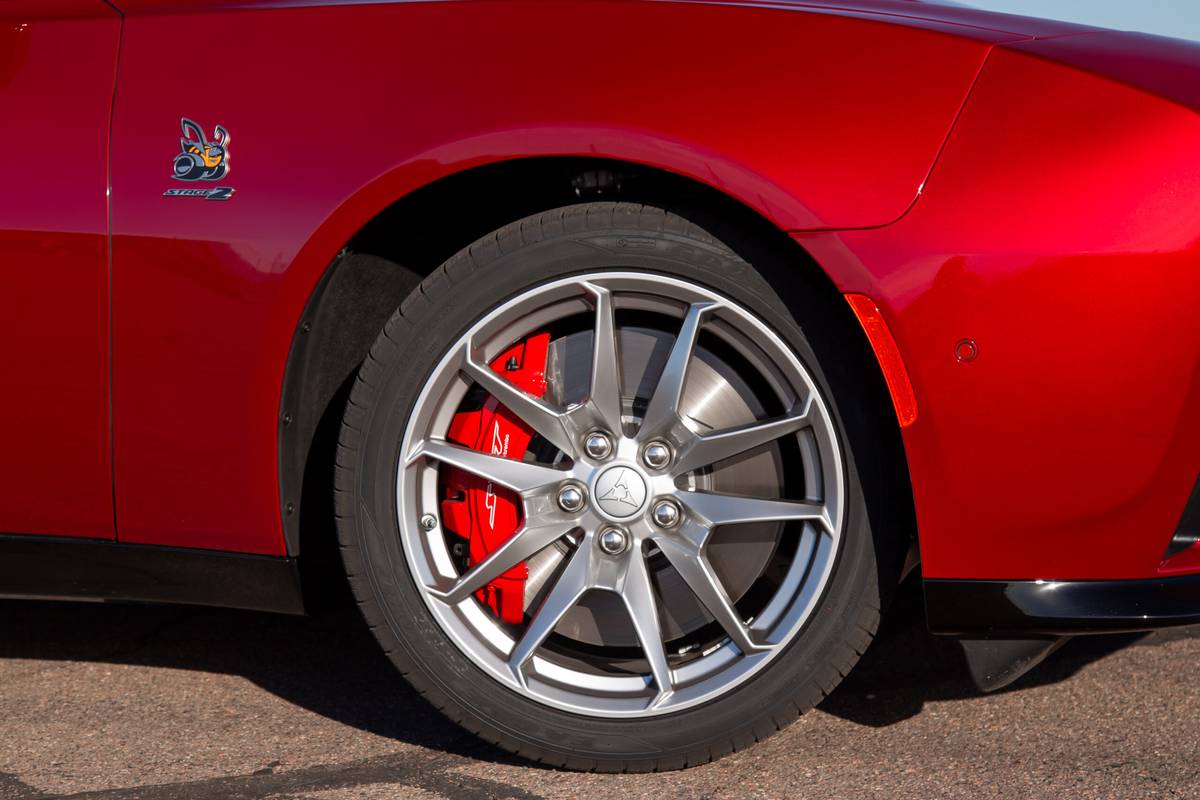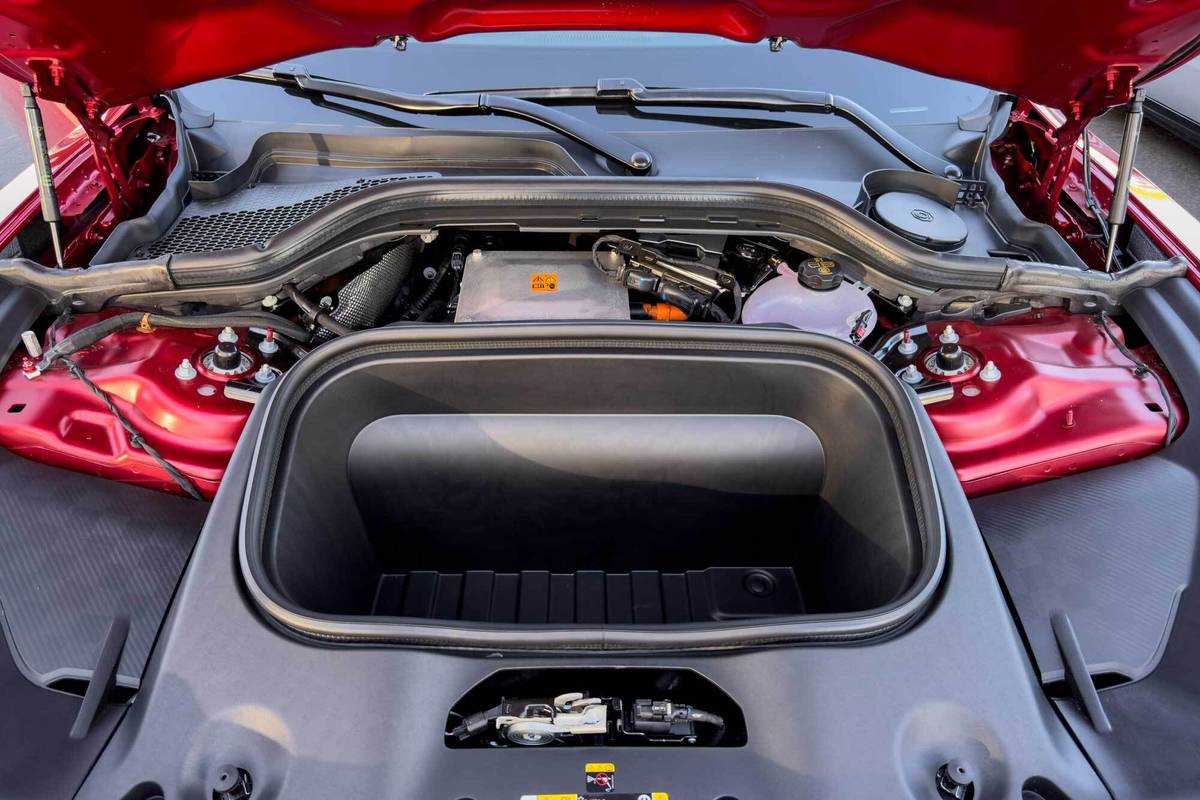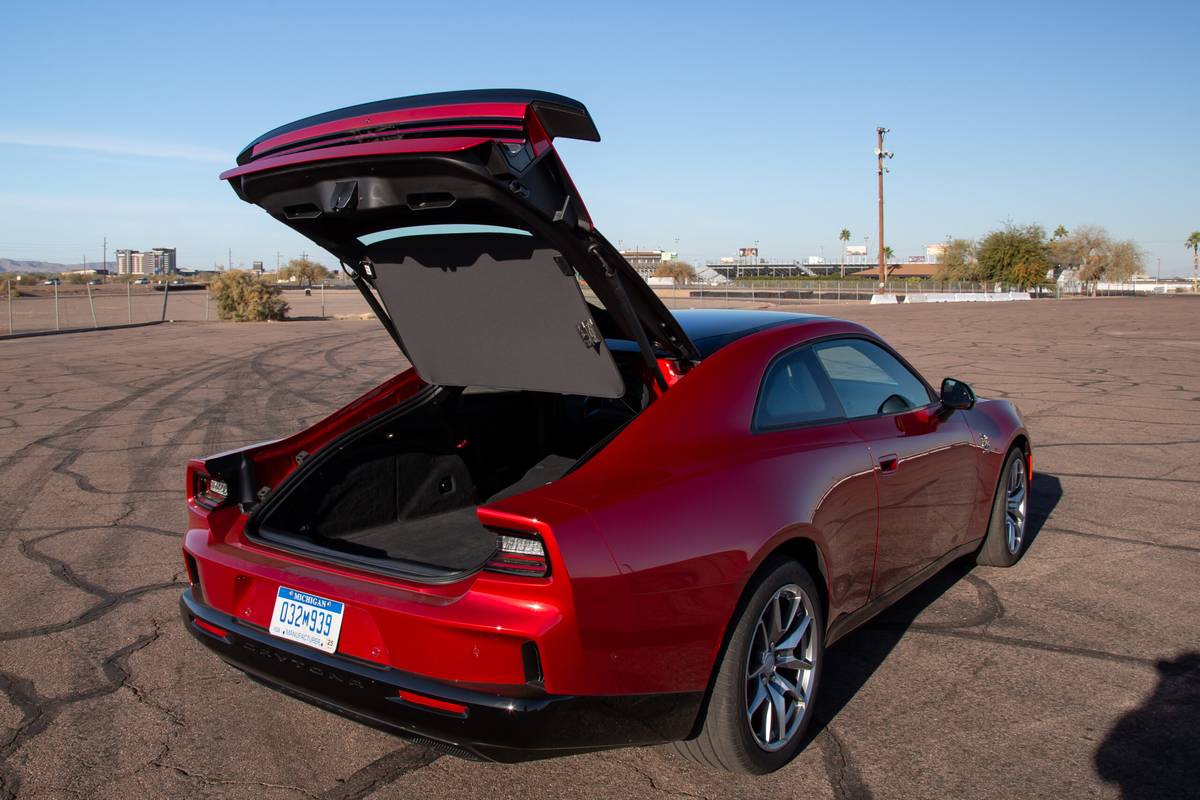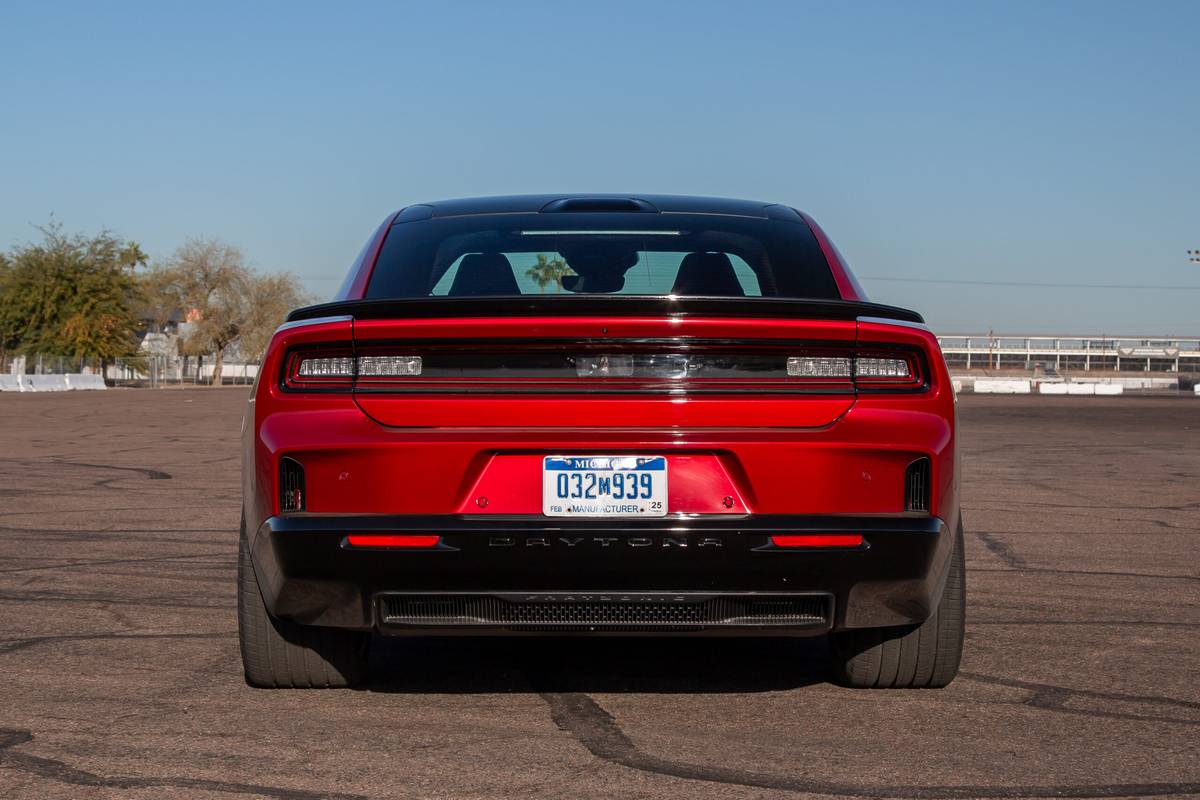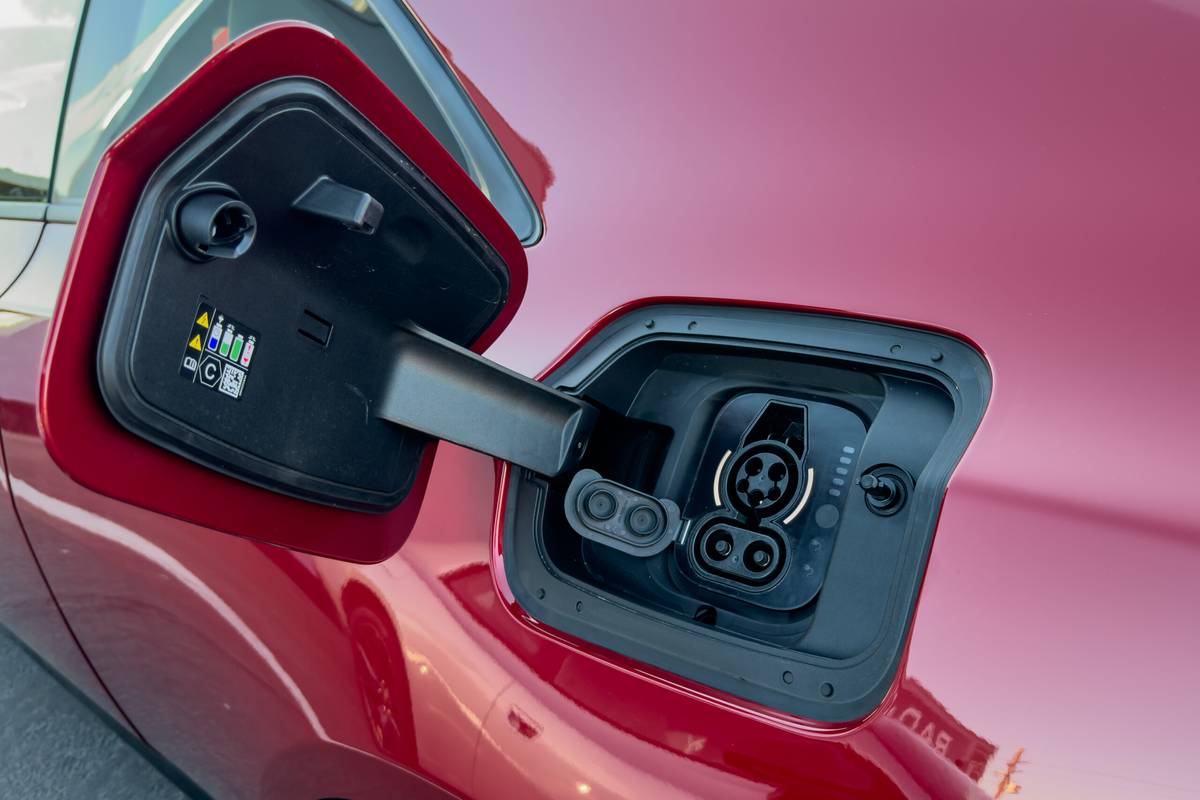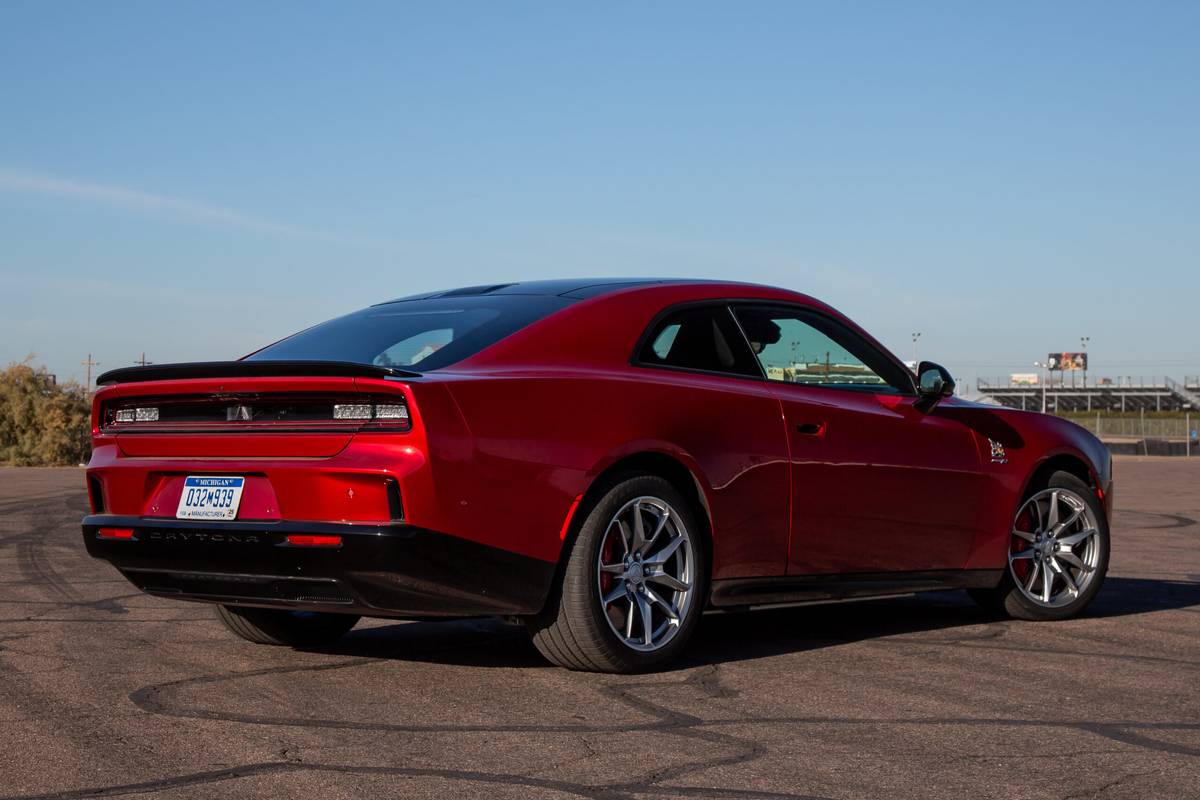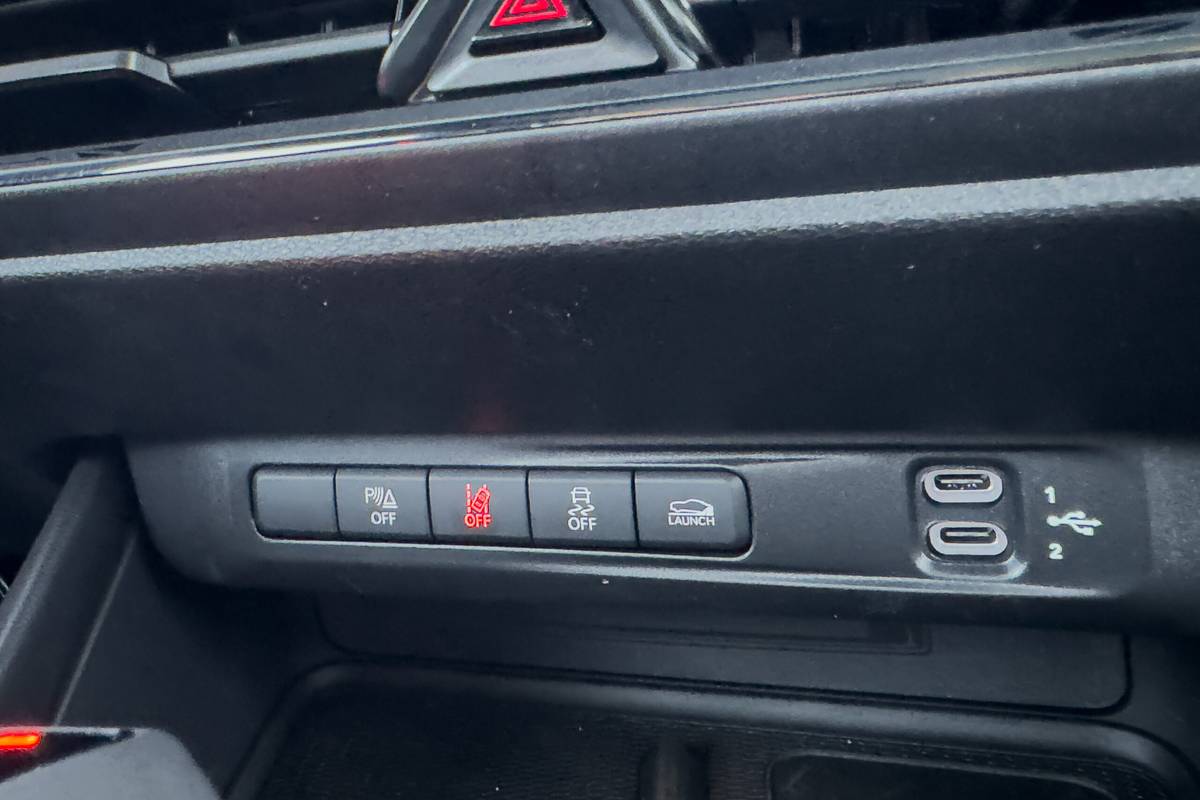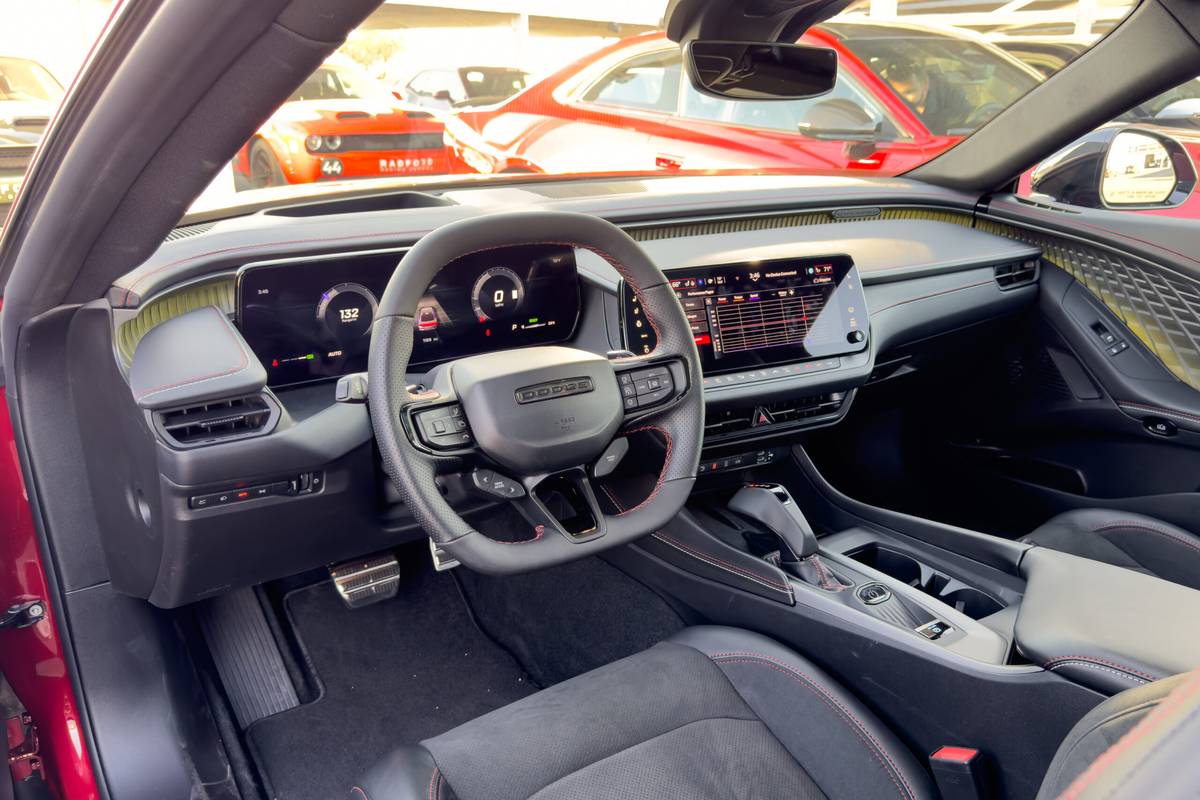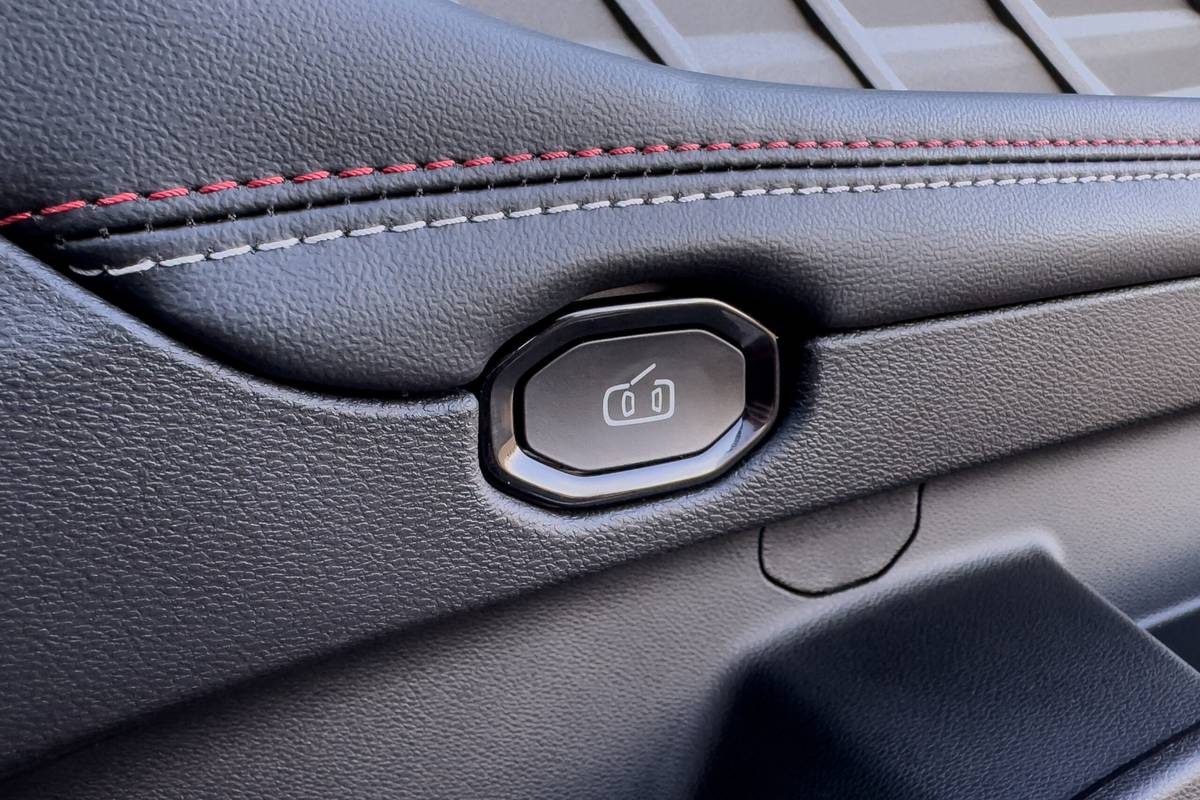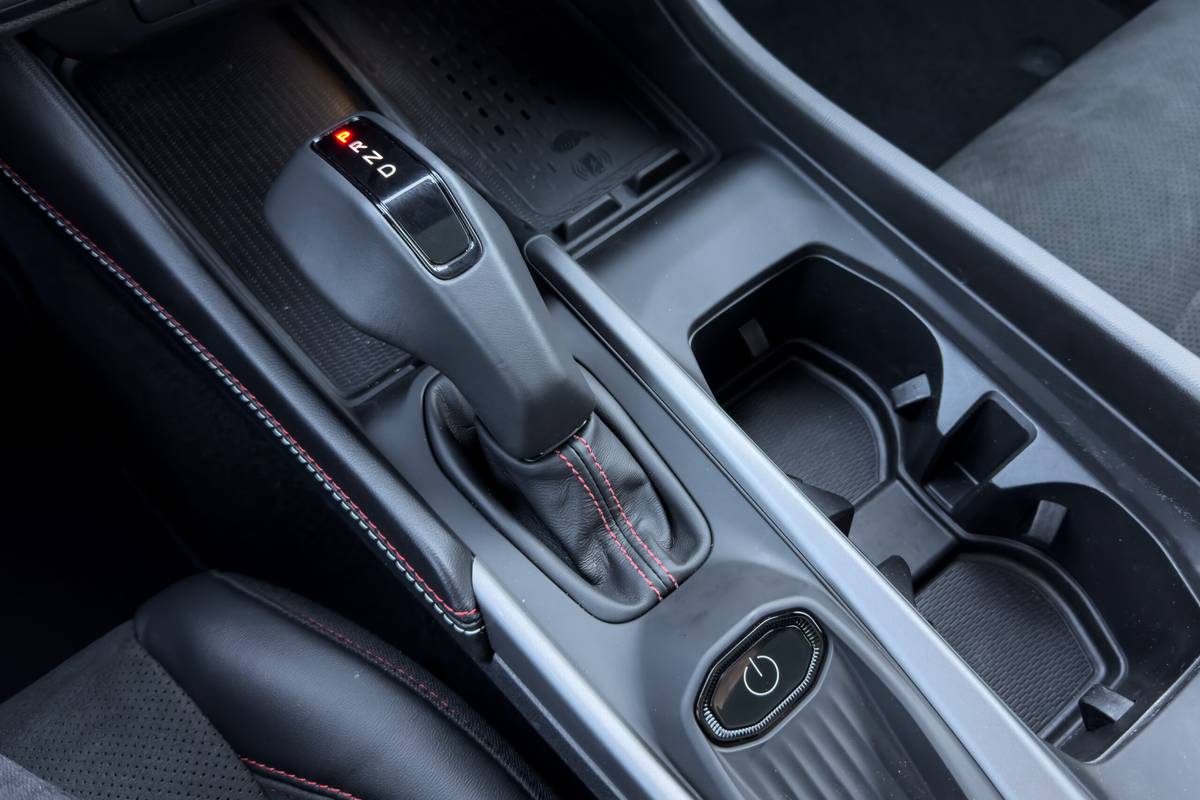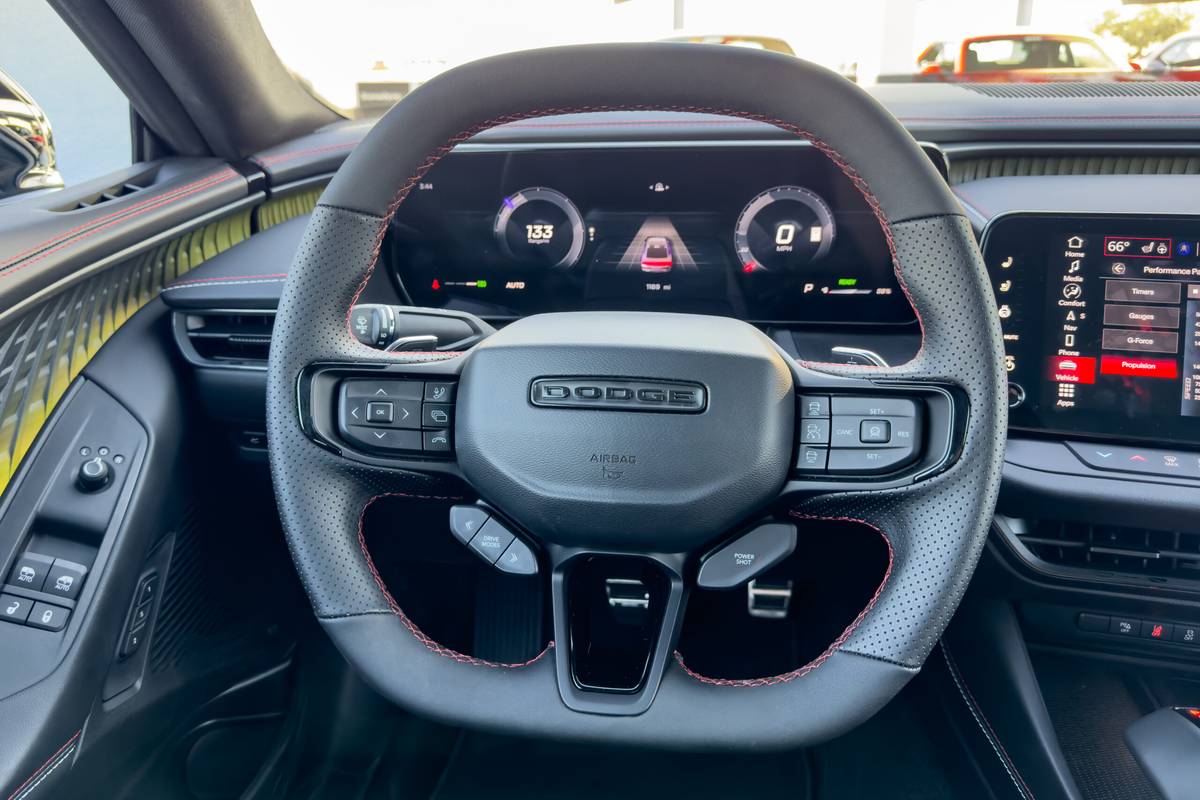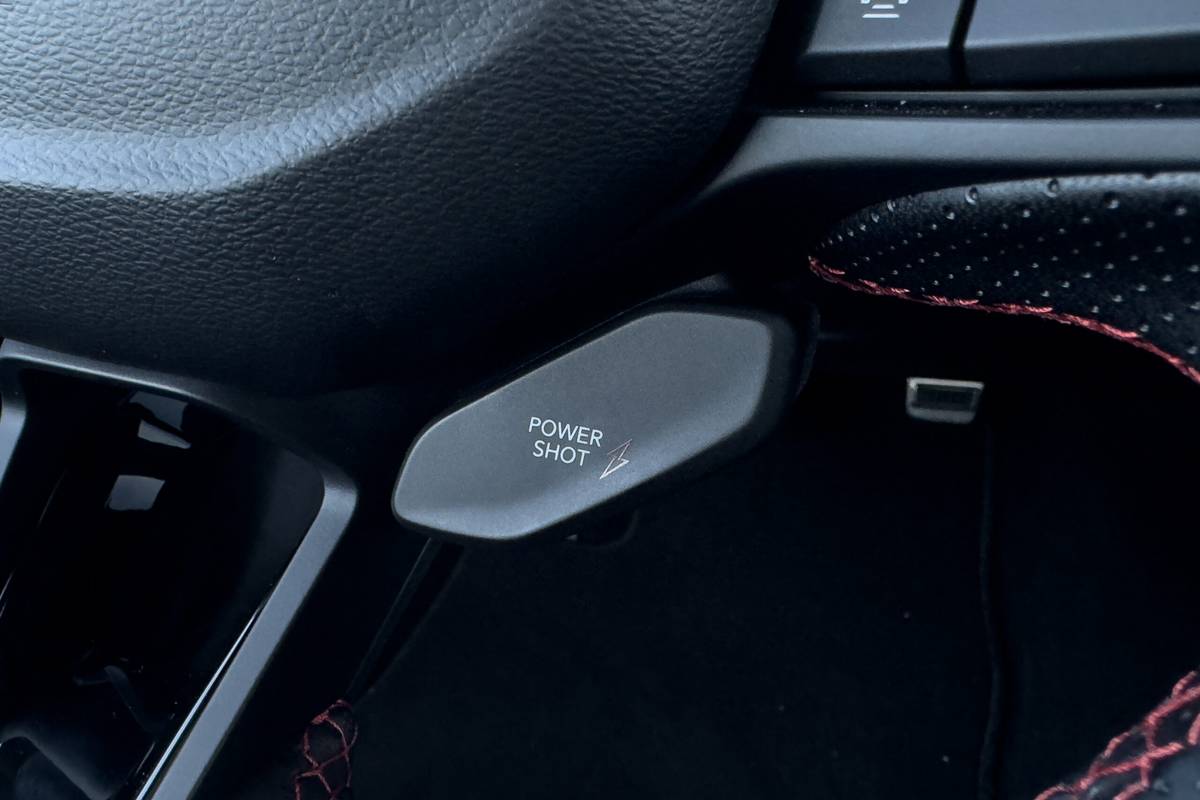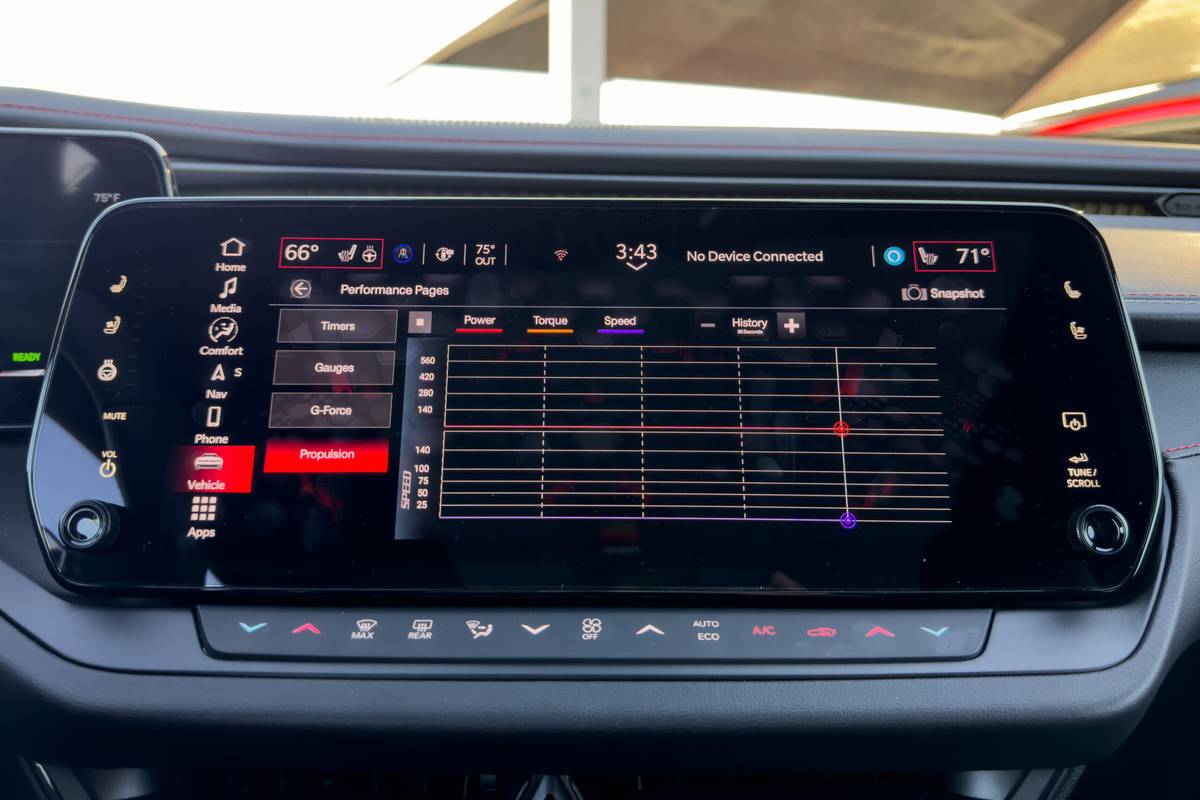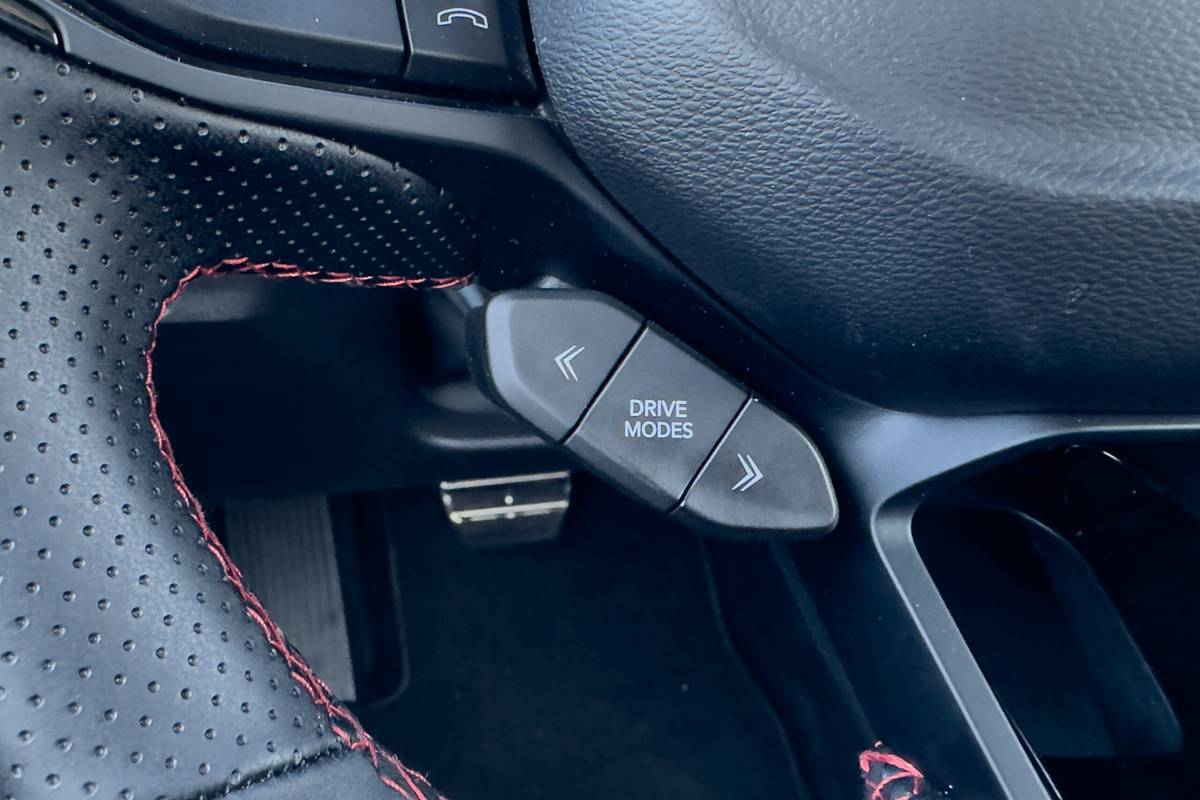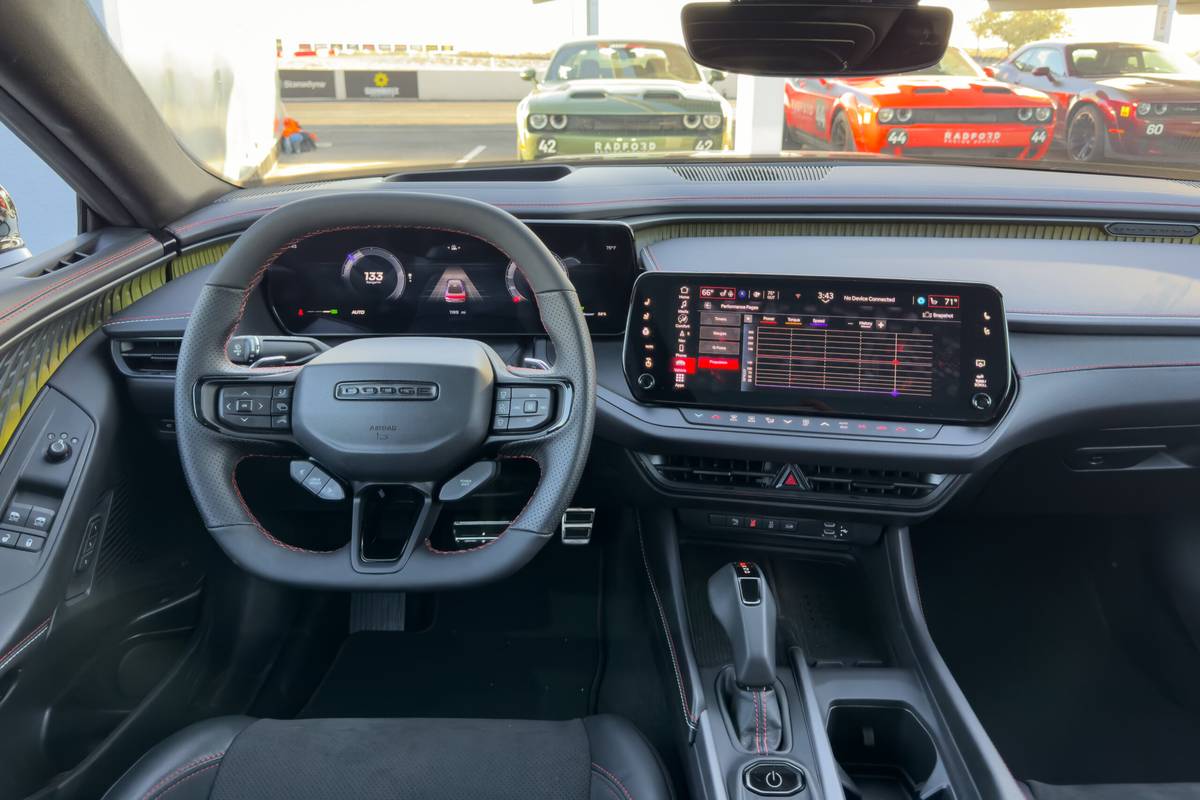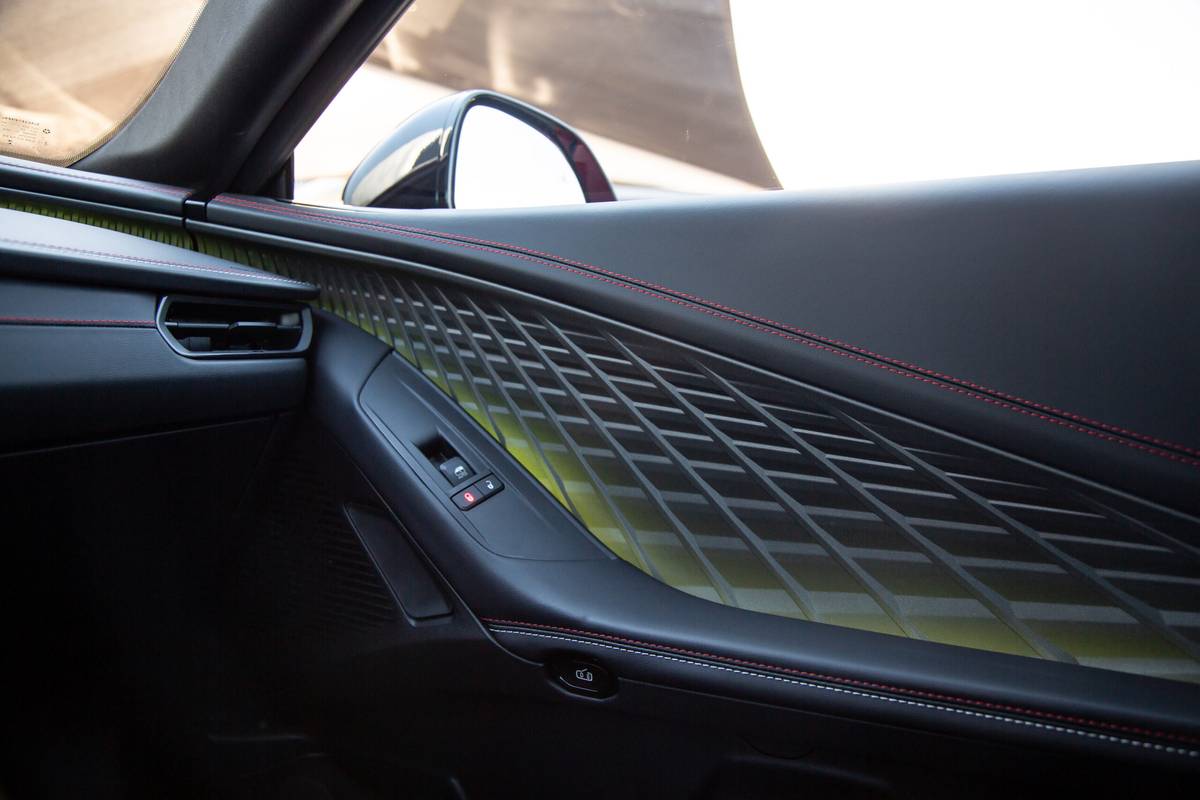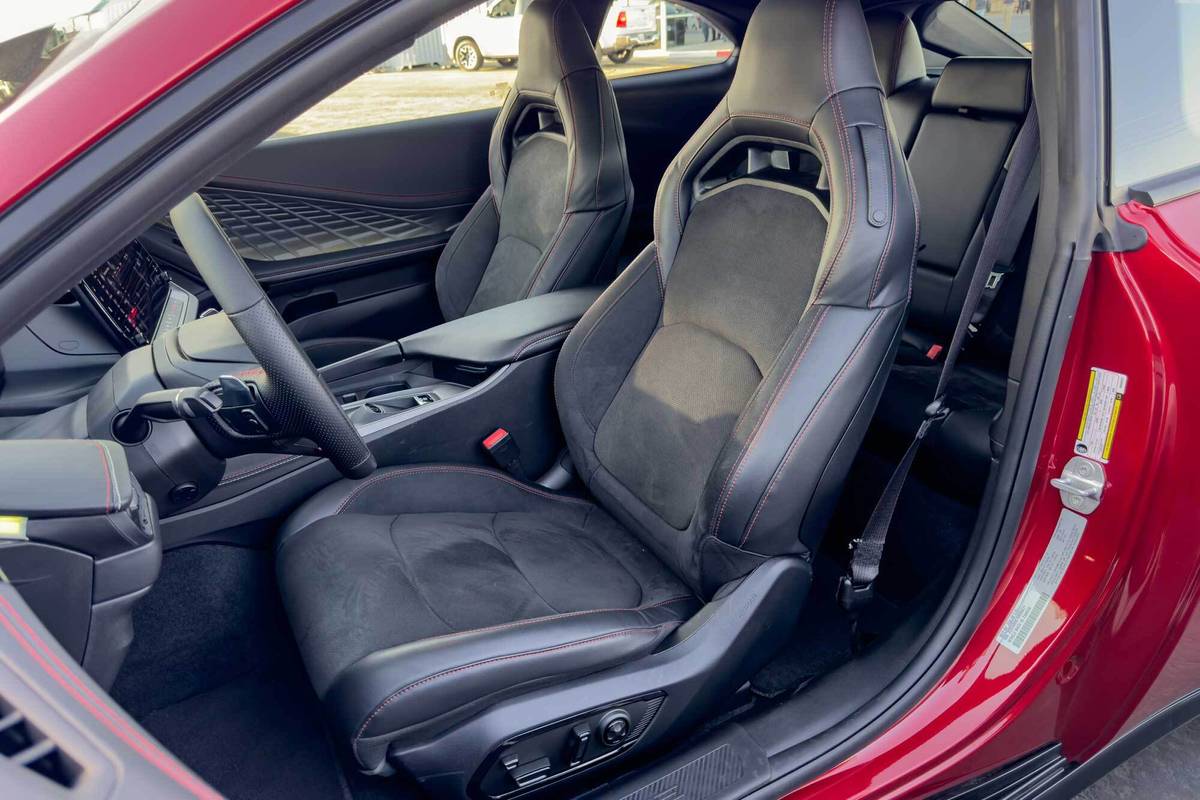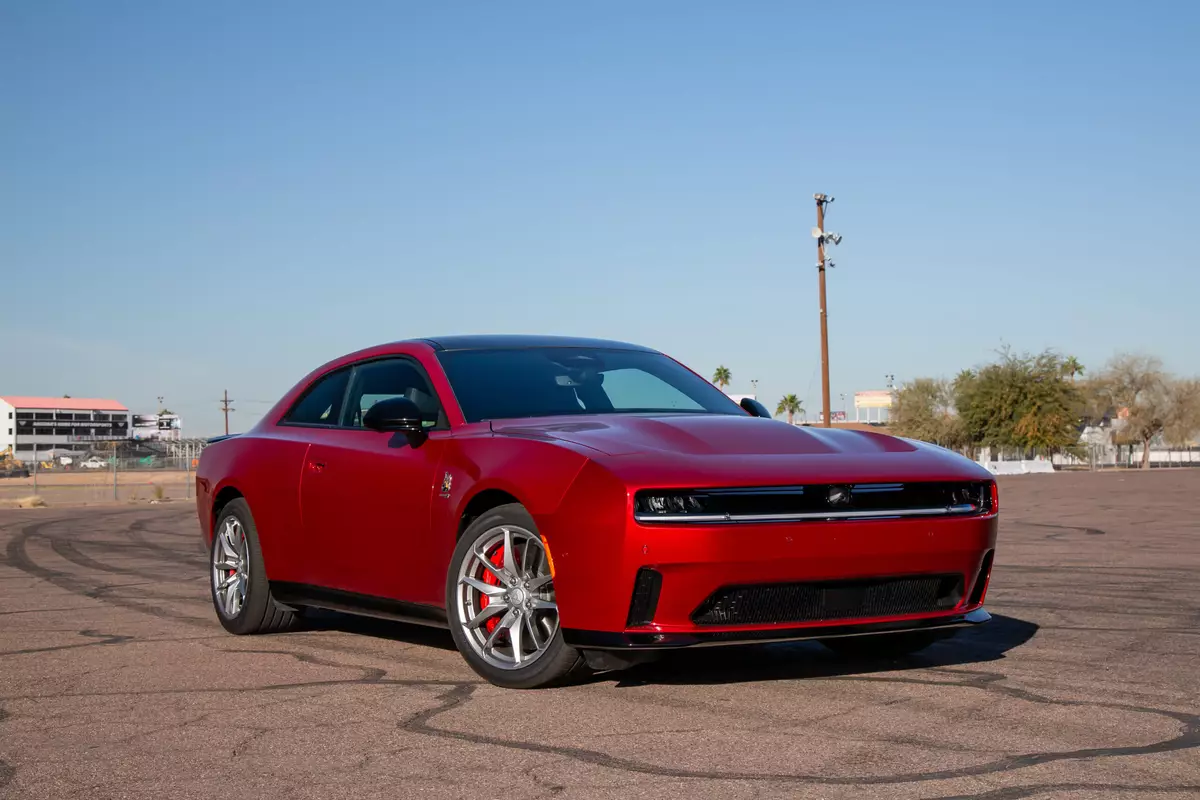
The verdict: Impressive power, refined handling, sharp style and a cheeky muscle car aesthetic is counterbalanced by slightly underwhelming real-world acceleration, poor electric vehicle functionality and a sky-high price for Dodge’s first performance EV.
Versus the competition: The Tesla Model 3 Performance and Hyundai Ioniq 5 N are the closest analogs, with both undercutting the Charger Daytona Scat Pack in price while offering better performance, charging capability and powertrain integration.
There was no timeline in which the all-new, all-electric 2025 Dodge Charger Daytona would ever have a gentle landing. Consider how the super-popular last-gen Dodge Charger and Challenger duo was often purchased as a wrapper for an engine, and not necessarily as a car; the Scat Pack’s 6.4-liter Hemi V-8 and the Hellcat’s supercharged 6.2-liter V-8 were inarguably the main draws, so reinforced by proliferation of these two hearts across the collective Stellantis-brand Dodge, Ram and Jeep lineups.
Related: First Call: Orders Open for Electric 2024 Dodge Charger Daytona
These vehicles were never rational purchases. Astronomical fuel bills, aged interiors and handling dynamics that fell well short of the Ford Mustang and Chevrolet Camaro’s comparably tight ship weren’t even considerations. These were (and are) purchased as life-size Hot Wheels cars complete with bright colors, cartoonish proportions and one of the best Americana soundtracks this side of the 1960s.
Charging Into the Future
On paper, the all-new electric Charger doesn’t appear to fall too far from that wish list. In either two- or four-door form — the latter coming to market in the near future — the eighth-generation Charger is equal parts theater, tradition and futurism, with a stretched silhouette that borders on caricature. Up front, a very EV-coded light bar stretches beneath an aerodynamic pass-through on the hood, while the wheels, candy colors and slab-sided shoulders are all genetic traits from the prior gas cars.
Given it usually comes down to subjective preference, we don’t talk much about automotive design at Cars.com, but I gotta say: It looks far better in person than it does in photos. Furthermore, I think it looks exactly like what I’d imagine a performance-oriented Dodge electric vehicle to look like. And I’m not the only one; I fielded multiple Q&As on our 60-mile road loop, with countless impromptu stoplight phone photoshoots and rolling car-to-car chalk talks as all manner of folk wildly signaled for me to roll my window down.
So, job well done on the visual drama. And on the mid-level model, no less; Dodge’s launch program in Phoenix offered seat time in a mix of Daytona R/Ts and Scat Packs, the two trims available at market launch. (Per our ethics policy, Cars.com pays for its own travel and accommodations when attending such manufacturer-sponsored events.) The power and performance hierarchy between these is shared with the old gas-powered models, with the R/T serving as the most affordable and least powerful of all the performance-oriented trims, and the Scat Pack cutting the difference between affordability and the top-level Charger Banshee trim that’s confirmed to come in the medium-term future.
Related Video:
We cannot generate a video preview.
Power, Absolutely
For now, all Chargers wearing the “Daytona” badge are electric, and both the R/T and Scat Pack have all-wheel drive with front and rear motors. They’re fed by the same 100.5-kilowatt-hour battery pack that has 93.9 kWh of usable capacity. In the R/T, 456 horsepower and 404 pounds-feet of torque is on tap as a baseline, with the PowerShot button on the steering wheel temporarily unlocking an extra 40 hp for 10 seconds. Dodge is cheeky and includes this max figure as the stated power — 496 hp for the R/T and 670 hp for the Scat Pack, the latter also making 627 pounds-feet of torque. Dodge had both on hand at the drive program, but a packed schedule meant I was only able to drive the more powerful Scat Pack. (I know — boo-hoo.)
Performance is requisitely impressive. For the R/T, Dodge reports a 0-60 mph time of 4.7 seconds, a significant step away from the Daytona Scat Pack’s official 3.3-second 0-60 scuttle. Dodge also says the Scat Pack is about a second quicker through the quarter-mile with a time of 11.5 seconds. This, according to the brand, “maintains Dodge’s throne as the world’s quickest and most powerful muscle car” — its words, not mine.
A Muscle Car? Um …
A muscle car? By virtue of the literal definition, I wouldn’t categorize the new electric Charger a muscle car, let alone any EV. No V-8, no muscle car — if all it takes for something to be a muscle car is American DNA and a heap of power, then any Tesla in Plaid trim, Lucid Air Sapphire or high-spec Ford Mustang Mach-E must be muscle cars, too. (They aren’t!) Or maybe it’s the Charger’s aesthetic that makes it worthy of the title, with thematic touches like the pistol-grip drive selector and Fratzog motif; in that case, we’d better expand the category to include all V-6 variants of the prior Challenger, Charger, Mustang and Camaro.
I know I’m being unfair here, but that’s one hell of a phrase to throw around. I also know Dodge really didn’t have a choice, but maybe this was a perfect opportunity to develop a new category or label for the big-body, big-performance American EV. It’s like adding an AMG badge to the trunk lid of your Mercedes-Benz C300: The only people who know what “AMG” means can tell it’s not the Real McCoy. Who ya foolin’?
I’ll put a pin in it for now, as I need to revisit this conversation when the gas-powered Chargers land with their twin-turbo inline-sixes. But there’s certainly nothing “muscle” about the way the Scat Pack boogies, and I mean that as a compliment. With AWD and instant torque, the Charger almost invariably smokes the front tires when hard launched in Drag Mode.
Performance Pressure
From a dig, 3.3 seconds to 60 feels about right to my derriere dyno, and I was able to record an 11.7-second quarter-mile on an unprepped surface. I also have complete faith that the Scat Pack scoots with the advertised 670 (max) hp and 627 pounds-feet of combined torque, but more often than not, it feels closer to somewhere in the 500s, even with PowerShot engaged, as power drops off in the higher realm of highway speeds thanks both to the roughly 5,800-pound curb weight and “interesting” powertrain tuning.
Even in Sport mode, which operates at a 630-hp baseline, there’s an observable delay when flooring the accelerator pedal, with almost a half-second lag between smacking the firewall and the car’s reaction. That’s not great, but these were pre-production vehicles, and I wouldn’t be surprised if this was ironed out by the time it reaches dealer lots. (I would also be equally unsurprised if it wasn’t.)
It feels quick, but nothing more … which I realize, now that I type it out, is the performance envelope occupied by the prior Scat Pack, which smoked the rears and rang ears with 485 hp and 475 pounds-feet. Rear-facing exterior speakers in a resonant chamber mean the Daytona Scat Pack is similarly shouty, with said “Fratzonic Chambered Exhaust” channeling enough aural and physical rumble to startle the uninitiated. Dodge synthesized the V-8-ish roar from a selection of classic muscle from its archive, including the O.G. Charger and the last-generation twins.
Subjectively, I don’t really jive with this emerging trend of fake exhaust sound. It’s not my thing, even though I appreciate the effort. Objectively, the Charger’s implementation is as good as it could sound short of just programming the recorded roar of a Hellcat, with Dodge claiming the same decibel output. It’s not quite as good as the Hyundai Ioniq 5 N’s mapped “shift” modes and N Active Sound+ feature, and the Fratzonic soundtrack blends into a one-note background rumble at higher speeds, but it’s certainly more interesting than an electric hum. Don’t like it? Just turn it off in the settings.
Electric Boogaloo
Out on some of Phoenix’s squiggliest desert roads, the Scat Pack demonstrated impressive body control thanks in no small part to its adaptive suspension. Roll and pitch is well managed without compromising the ride quality, and physical grip is gluey thanks to wide, staggered summer tires. You’ll never confuse it for svelte, but the Charger does an excellent job of muting its bulk even during high-speed transitions.
Quick and reactive steering is contrasted by numbness and a lack of granularity, but the brake-pedal actuation is impressively balanced between pure regenerative resistance and the physical brakes. The brakes are strong, too, hauling the almost 3-ton beast from high speeds with confidence and relative ease. Pure off-pedal regenerative braking isn’t as strong as I’d prefer and a bit rough in actuation, especially when toggled into the max “one-pedal” setting via the steering-wheel paddles, which merely toggle between resistance levels and do not act as a handbrake rheostat like in some EVs.
More From Cars.com:
- All-Electric 2024 Dodge Charger Daytona Coupe Priced From $61,590
- 2024 Dodge Charger Up Close: Is This the Coolest American EV Ever?
- 2024 Dodge Charger: The Brotherhood of Muscle Lives On
- What to Know Before Purchasing an Electric Vehicle: A Buying Guide
- Shop for a 2024 Dodge Charger Daytona Near You
Range Restrictions
From a grace ‘n’ pace perspective, the Daytona Scat Pack is a pleasant and mostly thrilling electric performance car to buzz around in, but it all gets a bit blurry when you evaluate it from a performance and EV perspective. The most efficient configuration of the R/T returns an impressive EPA-rated 308 miles of range, dropping to 241 miles on the juicier Scat Pack and down even more to 216 miles of range if you fit your Scat with the optional summer tires — not bad, but not great. Ditto for the DC fast-charge rate, which tops out at 183 kilowatts, enough to go from a 20% to 80% state of charge in 24 minutes in ideal conditions.
So-so range for the Scat Pack, average fast-charging capability, limited EV-centric features and “pretty good” performance make this a rather uncompelling proposition for someone already accustomed to the current EV landscape. It turns sour when factoring in the $75,185 base price for the Scat Pack, which is a good $20,000 more than the last V-8-powered Charger Scat Pack or a Tesla Model 3 Performance, with the latter offering holistically better performance and access to the strongest fast-charging network in the U.S.
Nor does it make a compelling case for converting the gas-chuggin’ Mopar bros to the electric side, as from almost any parameter, the Charger Daytona is less exciting, less involving and less evocative than the gas cars it replaces. It’s certainly more refined and far more usable thanks to excellent suspension tuning and it being a liftback versus a conventional coupe, but few purchased the prior cars for any other reason than sound, style, fury and smoke.
Just Who Is This For?
I left this drive confused. I don’t know who this car is for, and I really don’t know who’s going to buy it. It’s already going to be an uphill battle for the forthcoming gas-powered Charger Six Pack with its twin-turbo six-cylinder, and I believe that few shoppers will spring for the more expensive and significantly more compromised package offered by the all-electric Charger Daytona.
That’s a shame, as I think there’s certainly things to like, and I’m very much looking forward to chatting in the future with real owners of the car. I’m also keen to get my hands on a Charger Six Pack to determine which frustrations are EV-related and which ones are endemic to the platform.
Cars.com’s Editorial department is your source for automotive news and reviews. In line with Cars.com’s long-standing ethics policy, editors and reviewers don’t accept gifts or free trips from automakers. The Editorial department is independent of Cars.com’s advertising, sales and sponsored content departments.














